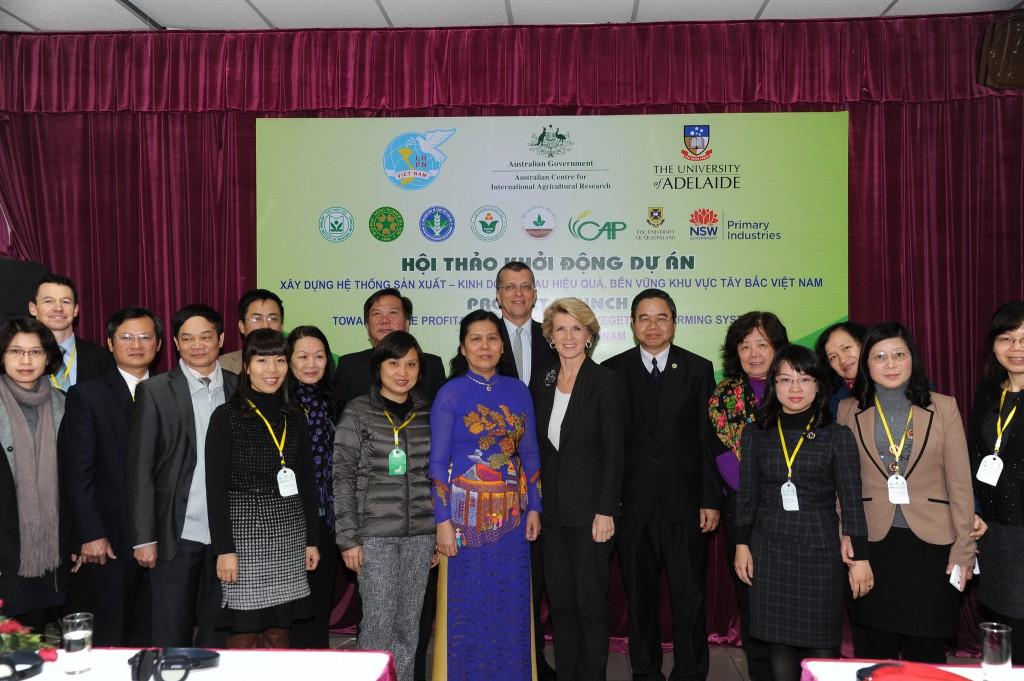 DFAT might not do strategy but its minister sure does. Julie Bishop will unveil a new international development policy next week. Although it’s tempting to dismiss claims this will mark a ‘paradigm-shift for Australia’s aid program’ as pre-launch puff, the occasion offers the government the chance to rehabilitate quietly the concept of national security, and might even represent the first glimmer of a new strategy for national security. While that project would likely be entirely different to the all-encompassing Rudd-Gillard model, a more restrained, disaggregated, and practically-focused approach to the concept isn’t without its attractions.
DFAT might not do strategy but its minister sure does. Julie Bishop will unveil a new international development policy next week. Although it’s tempting to dismiss claims this will mark a ‘paradigm-shift for Australia’s aid program’ as pre-launch puff, the occasion offers the government the chance to rehabilitate quietly the concept of national security, and might even represent the first glimmer of a new strategy for national security. While that project would likely be entirely different to the all-encompassing Rudd-Gillard model, a more restrained, disaggregated, and practically-focused approach to the concept isn’t without its attractions.
At first glance, it might seem a stretch to expect ministers to resurrect a mindset many of them regard as overblown. Australia’s last big push for ‘joined-up’ national security began at the start of the ‘national security decade’ following 9/11 (which saw the budget and staffing of the AFP and Australian Intelligence Community more than double) but really took-off with Kevin Rudd’s expansion of the security coordination apparatus in his department, appointment of a National Security Adviser and publication of a National Security Statement. That report and Julia Gillard’s National Security Strategy were criticised as too optimistic about our strategic outlook, over-centralised, and producing un-actionable ‘laundry lists’ of problems and goals.
The Abbott Government has shifted primacy back to line agencies and staffers, with the National Security Adviser reclassified as an associate secretary—rather like the former-planet Pluto whose orbit, it’s now realised, is ruled by larger bodies. Moreover, the reappearance of old-fashioned hard-power in Syria, Ukraine and East Asia is likely to deprioritise useful but discretionary broader security tasks. In brief, a comprehensive but artificially seamless ‘expansivist’ phase of national security policy is over for now.
But while conservative governments might have less appetite for grandiose schemes or patience for elaborate frameworks, the proposition that governments should utilise every policy lever at their disposal to efficiently and effectively manage the diverse security challenges facing them and their citizens is hardly partisan politics. While in opposition in 1994, the Coalition proposed an integrated National Security Policy be established within PM&C, for example. It was John Howard who revived the NSC in 1996. And Operation Sovereign Borders, though narrowly-aimed, is nothing if not multi-agency.
So what’s the evidence that Bishop’s aid policy exhibits a renewed national security consciousness? One of the new Government’s first acts was to announce AusAID would be reintegrated into DFAT to deliver a more responsive and flexible aid program better aligned to our national interests. Bishop argues better coordinating our aid, trade and foreign policy settings is critical to promoting stability and growth in nearby countries. She feels reducing poverty and advancing Australia’s interests aren’t incompatible but overlap significantly since we all ‘depend on a safe, secure, and prosperous region’. Security dimensions of aid include the stabilising of fragile states, security sector reform, and disaster relief. But powerful benefits can also be achieved simply via well-targeted efforts to reduce deprivation and inequality as potential sparks for violence. Reviews of our aid objectives, benchmarks, private sector roles, issues for women, and key bilateral relationships, will inform next week’s policy.
Bishop’s approach meets Hugh White’s dictum that any ‘strategy that deserves the name must set objectives, establish priorities, and allocate resources’. And it accords with Michael L’Estrange’s call for such efforts to be ‘clear, consistent and constrained’ rather than attempt to develop policies and programs right across the policy space of national security. Further, post-integration DFAT hasn’t grown so large or sweeping in its duties that it violates Ric Smith’s call for a partnership/community-based framework, rather than a Homeland Security-style structure, to boost coherence.
Signs of a nascent national security ethos in our emerging aid paradigm aren’t welcome just for academic reasons. A growing body of lessons on what worked well and not-so-well during stabilisation missions in Bougainville, Timor-Leste, and Solomon Islands is useful, since interventions can arise without much warning and state-building is demanding. But efforts to address challenges before they turn into acute crises receive less attention than they deserve. That’s unfortunate, as major interventions are risky, expensive, and protracted for their contributors, and can spur dependency in recipient-countries. More effective sub-crisis conflict prevention would be good for neighbouring countries but also profoundly in our national interest. US expectations that allies should manage security in their own regions are growing; our near-abroad is increasingly internationally congested; and better synchronisation would harness our policy levers and relationships to shape a more positive strategic environment.
Bishop’s approach to her part of the national security project is perhaps best characterised as being functionalist rather than formalist—and resonates with the Howard Government’s early approach to Asian engagement in the late 1990s. But even a functionalist approach to national security would benefit from clear guidance. On that score, the foreign policy white paper suggested in our submission to the Senate’s Aid Inquiry might be more useful than the aid white paper the Inquiry recommends. It would draw together the strands of our diplomatic, strategic, economic, humanitarian, developmental and other international aims to deliver her vision. It could also help inform other elements of the national security project—as Customs and Immigration prepare to establish a single border agency and as Defence prepares its White Paper.
Karl Claxton is an analyst at ASPI. Image courtesy of DFAT.